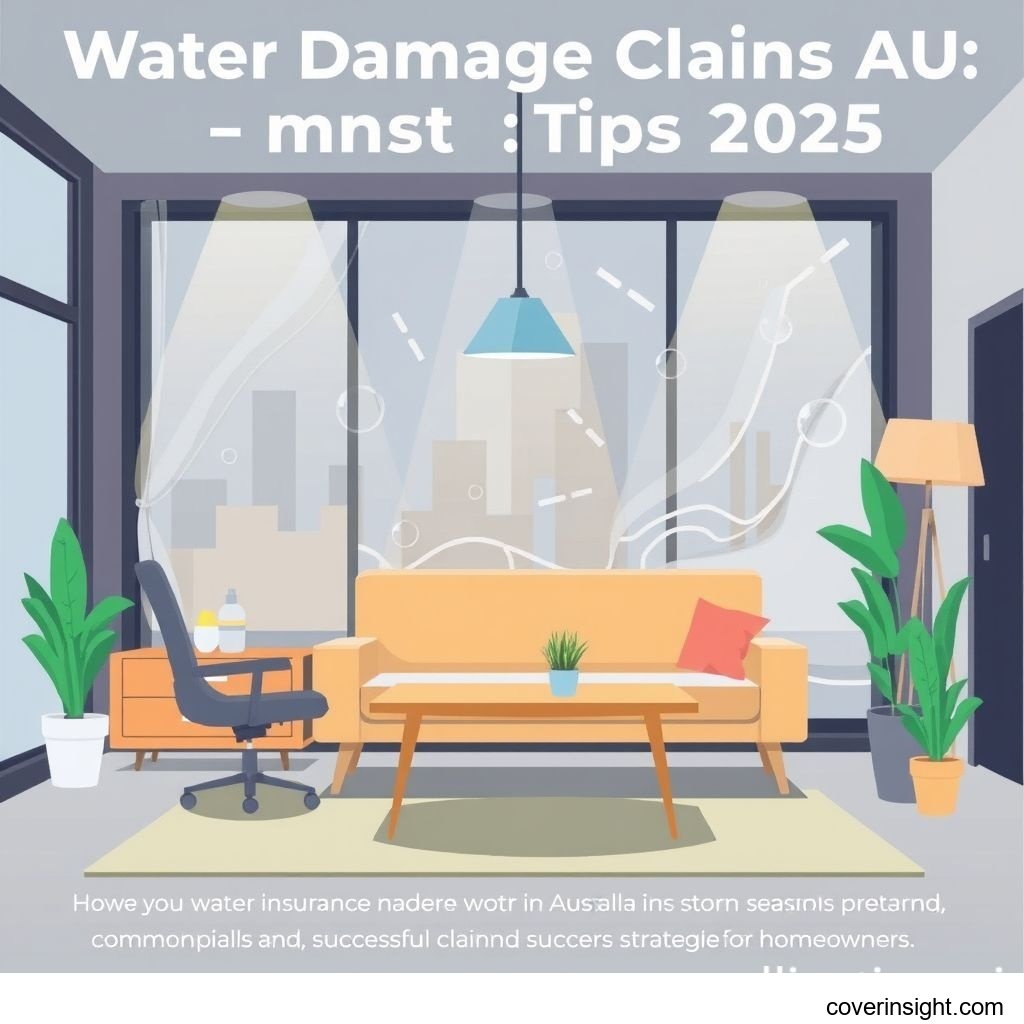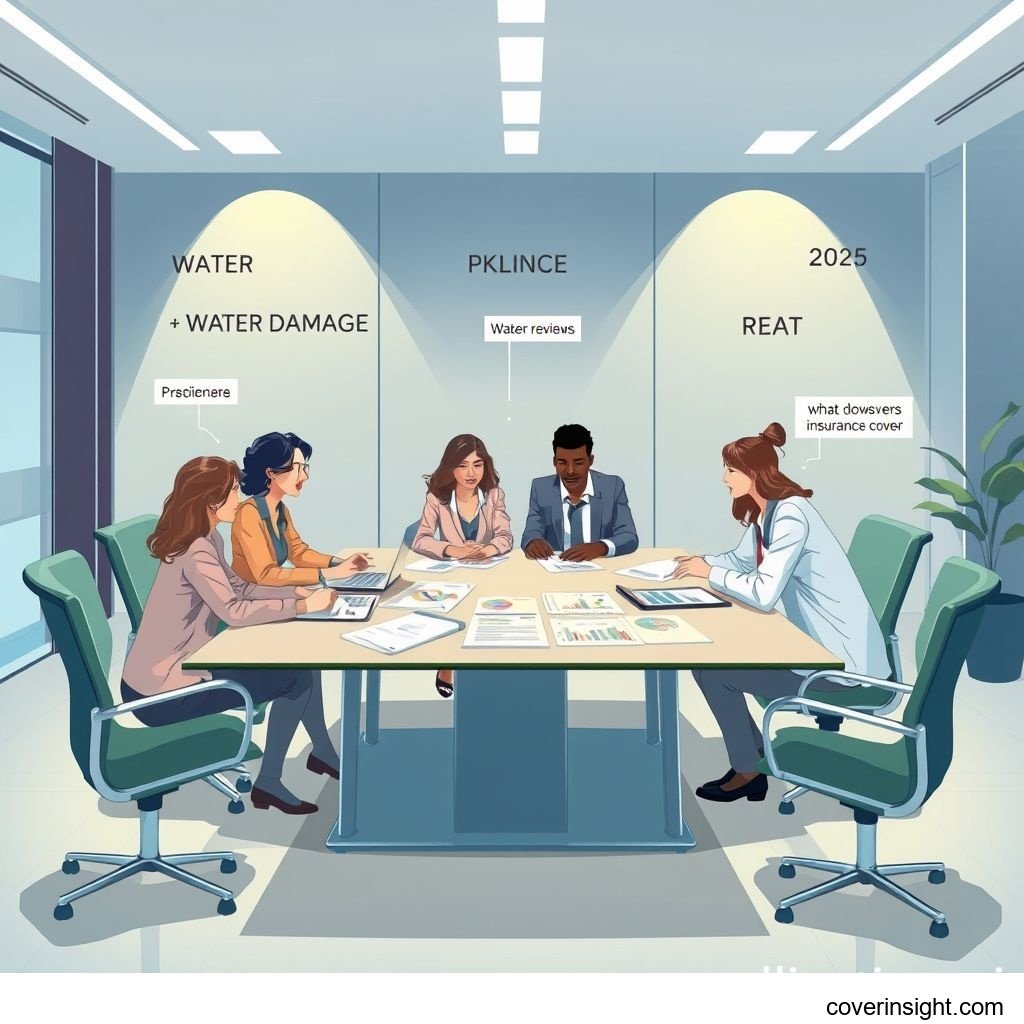Introduction
Navigating the complexities of home insurance is crucial for every Australian homeowner, especially in 2025. Understanding what does homeowners insurance cover is not just about peace of mind; it's about protecting your most significant asset from unforeseen damages. From severe weather events like cyclones and floods to everyday mishaps like burst pipes, a comprehensive policy acts as your financial safeguard. This guide will delve deep into the nuances of Australian home insurance, helping you comprehend your coverage, manage costs, and prepare for potential risks. Knowing what does homeowners insurance cover ensures you’re prepared for the future.
Understanding What Does Homeowners Insurance Cover
Australian homeowners face a range of unique risks, from intense weather phenomena to common household incidents. A robust homeowners insurance policy is designed to mitigate the financial impact of these events. Exploring what does homeowners insurance cover involves looking at both included perils and specific exclusions.
What’s Included
Most standard Australian home insurance policies provide a broad spectrum of protection. Understanding these inclusions is key to knowing what does homeowners insurance cover in practice.
-
Building Coverage: This protects the physical structure of your home, including the roof, walls, floors, fixtures, and fittings. It typically covers damage from:
-
Fire and smoke
-
Storms, including hail and strong winds
-
Explosions
-
Earthquakes and tsunamis
-
Impact by vehicles or falling trees
-
Water damage from sudden escape of liquid (e.g., burst pipes, overflowing gutters)
-
Theft or attempted theft
-
Vandalism or malicious acts
-
-
Contents Coverage: This protects your personal belongings inside your home. Items like furniture, electronics, clothing, and appliances fall under this. The perils covered are generally similar to those for building coverage.
-
Legal Liability: An essential component of what does homeowners insurance cover is liability. This protects you if someone is accidentally injured on your property, or if your property causes damage to someone else's property, and you are found legally responsible.
-
Temporary Accommodation: If your home becomes uninhabitable due to an insured event, many policies will cover the cost of temporary accommodation while repairs are underway.
-
Removal of Debris: Costs associated with clearing debris after a covered event, like a fire or storm, are often included.
Common Exclusions
While what does homeowners insurance cover is extensive, there are typical exclusions to be aware of. These are critical for avoiding unexpected claim denials.
-
Gradual Damage: Damage that occurs over time due to wear and tear, lack of maintenance, or gradual deterioration (e.g., persistent leaks, rust, mould unless it's a direct result of a sudden, insured event).
-
Pest Infestations: Damage caused by termites, rodents, birds, or other pests is generally not covered.
-
Actions of the Sea: Coastal erosion or damage directly caused by the movement of the sea (e.g., storm surge in some policies, though this can vary).
-
Certain Flood Events: While some policies now offer flood coverage, it's often an optional extra or subject to specific definitions and exclusions. Always check your Product Disclosure Statement (PDS) to clarify what does homeowners insurance cover regarding floods.
-
Unoccupied Property: Homes left vacant for extended periods (e.g., typically 60-90 days) without prior notification to the insurer may have restricted or no coverage.
-
Deliberate Acts: Damage caused intentionally by you or a member of your household.
-
Illegal Activities: Damage resulting from illegal activities conducted on the property.
Cost Analysis: How Much Does What Does Homeowners Insurance Cover Cost?
The price of your home insurance premium can vary significantly based on numerous factors. Understanding these elements can help you make informed decisions and potentially reduce your costs. Knowing what does homeowners insurance cover is just one part; understanding its cost is another.
Price Factors
Several key elements influence how much you pay for what does homeowners insurance cover.
-
Location: Properties in areas prone to natural disasters (e.g., bushfires, floods, cyclones) or with higher crime rates typically face higher premiums.
-
Property Characteristics:
-
Age and construction materials of the home (e.g., brick homes might be cheaper to insure than timber ones).
-
Roof type and condition.
-
The presence of safety features like smoke alarms, security systems, and robust locks.
-
The sum insured for both building and contents.
-
-
Claim History: A history of previous claims, both by you or at the property, can lead to increased premiums.
-
Excess Amount: Choosing a higher excess (the amount you pay upfront when making a claim) can reduce your premium.
-
Chosen Cover Level: Opting for additional coverages like flood, accidental damage, or motor burnout will increase the overall cost of what does homeowners insurance cover.
-
Insurer and Policy Type: Different insurers have different pricing models and policy structures. Comparing various options is always recommended. For more details on regulatory aspects, refer to the Australian Prudential Regulation Authority.
Saving Tips
Reducing your home insurance premium doesn't mean compromising on what does homeowners insurance cover. Here are some effective strategies:
-
Shop Around: Obtain multiple quotes from different insurers annually. Premiums can vary significantly between providers.
-
Increase Your Excess: If you can afford a higher out-of-pocket expense in case of a claim, increasing your excess can lower your premium.
-
Bundle Policies: Many insurers offer discounts if you bundle your home, contents, and car insurance policies with them.
-
Improve Security: Installing security systems, deadlocks, and smoke detectors can sometimes lead to discounts.
-
Maintain Your Property: Keeping your home well-maintained, especially the roof and gutters, can reduce the risk of certain damages and potentially prevent claims that might raise future premiums.
-
Review Your Sum Insured: Ensure your sum insured accurately reflects the rebuild cost of your home and the replacement value of your contents, not their market value. Over-insuring means overpaying.
-
No Claims Discount: Maintain a good claims history. Many insurers reward policyholders who haven't made claims with a no-claims discount.
Navigating Claims for What Does Homeowners Insurance Cover
When an unexpected event occurs, knowing how to efficiently file a claim is crucial. A smooth claims process depends on understanding the steps involved and your responsibilities. This section details the process for making a claim under what does homeowners insurance cover.
The Claims Process
Following the correct procedure can expedite your claim and ensure a fair outcome.
-
Ensure Safety: Prioritise the safety of yourself and your family. If there's an immediate danger, evacuate.
-
Mitigate Further Damage: Take reasonable steps to prevent further damage to your property (e.g., turn off the main water supply if a pipe bursts, cover a damaged roof with a tarp during a storm). Keep receipts for any emergency repairs.
-
Document Everything:
-
Take clear photos and videos of the damage from multiple angles.
-
Make a detailed list of damaged or lost items.
-
Gather any relevant documents, such as purchase receipts or valuations.
-
-
Contact Your Insurer Promptly: Notify your insurer as soon as possible after the incident. Provide them with all the documented evidence.
-
Lodge Your Claim: Your insurer will guide you through their specific claims process. This usually involves completing a claim form and providing requested documentation.
-
Assessor Visit: For significant claims, an insurance assessor may visit your property to evaluate the damage and determine the scope of repairs.
-
Review and Settlement: Once the assessment is complete, the insurer will review your claim and make an offer for settlement, either for repair costs, replacement of items, or a cash settlement.
Dispute Resolution
Sometimes, disagreements arise during the claims process. It's important to know your options for resolving disputes related to what does homeowners insurance cover.
-
Internal Dispute Resolution: All insurers have an internal complaints or dispute resolution process. Start here. Clearly state your issue, provide supporting evidence, and request a review.
-
Australian Financial Complaints Authority (AFCA): If you are not satisfied with the outcome of the insurer's internal review, you can escalate your complaint to AFCA. This is a free, independent dispute resolution service for consumers with financial complaints. The Insurance Council of Australia also provides helpful resources on navigating claims and understanding your rights. More information can be found on their website: Insurance Council of Australia.
-
Legal Advice: As a last resort, if AFCA's decision doesn't resolve the matter, you may consider seeking independent legal advice.
Policy Renewal and Negotiation: Maximising Your What Does Homeowners Insurance Cover
Your annual policy renewal is a crucial opportunity to review your coverage and potentially save money. Don't just auto-renew; proactively manage your policy to ensure you're getting the best value for what does homeowners insurance cover. This includes strategies for policy renewal negotiation.
Policy Renewal Negotiation Strategies
Engaging with your insurer at renewal time can lead to better terms for what does homeowners insurance cover.
-
Review Your Needs: Before accepting a renewal, assess if your circumstances have changed. Have you renovated? Acquired valuable new items? Does your sum insured still reflect current rebuild costs?
-
Compare Current Market Rates: Use your renewal notice as a prompt to get new quotes from competing insurers. Often, new customers receive more competitive rates than loyal existing ones.
-
Highlight Loyalty: If you find a better quote elsewhere, contact your current insurer. Politely mention the competitor's offer and ask if they can match or beat it to retain your business.
-
Discuss Discounts: Ask about any discounts you might be eligible for that aren't automatically applied (e.g., senior discounts, multi-policy discounts, security upgrades).
-
Adjust Your Excess: Re-evaluate your excess. If your financial situation has improved, opting for a higher excess could lower your premium.
-
Remove Unnecessary Cover: If your circumstances have changed (e.g., no longer running a home business), ensure you're not paying for coverage you no longer need. This proactive policy renewal negotiation can be highly effective.
Understanding Policy Changes
Insurers can make changes to their policies at renewal. It's vital to read your renewal documents carefully to understand how these might impact what does homeowners insurance cover for you.
-
Changes to Terms and Conditions: Insurers might update their PDS, altering definitions, exclusions, or claim limits. Be aware of any new exclusions related to specific natural disasters or types of damage.
-
Premium Adjustments: Premiums can increase due to factors beyond your control, such as rising claims costs in your area, increased reinsurance costs for the insurer, or changes in government levies.
-
New Inclusions/Exclusions: Some policies might introduce new benefits or remove existing ones. For instance, flood coverage might be automatically included in some regions, or new limits might apply to certain types of damage.
-
Sum Insured Review: Your insurer might suggest an updated sum insured based on inflation or building cost indices. Ensure this figure remains accurate for your home's rebuild cost.
Preparing for Risks: Cyclone Season Preparation and More
Australia's climate presents unique challenges, making proactive risk management essential. Understanding what does homeowners insurance cover in the context of these risks is paramount for preparedness. This includes focusing on cyclone season preparation.
Cyclone Season Preparation
For those in Northern Australia, cyclone season preparation is an annual imperative. A solid plan protects both your property and your family.
-
Secure Your Property:
-
Trim trees and branches that could fall on your home.
-
Clear gutters and downpipes.
-
Secure loose items around your yard (e.g., outdoor furniture, trampolines, sheds).
-
Check the condition of your roof and ensure it's in good repair.
-
-
Emergency Kit: Prepare an emergency kit with essentials like:
-
First aid supplies
-
Non-perishable food and water
-
Battery-powered radio and flashlight with spare batteries
-
Important documents (copies of insurance policies, identification)
-
Medications
-
-
Evacuation Plan: Know your local evacuation routes and designated shelters.
-
Review Your Insurance: Ensure your policy covers storm and water damage adequately, particularly for wind and rain ingress. Confirm what does homeowners insurance cover specifically for cyclones and related events.
Flood and Bushfire Considerations
Beyond cyclones, floods and bushfires pose significant threats across Australia.
-
Flood:
-
Check if your policy includes flood coverage, as it's often an optional extra or defined very specifically. This is crucial for understanding what does homeowners insurance cover regarding water damage from external sources.
-
Elevate valuable items and electrical appliances if you live in a flood-prone area.
-
Have an evacuation plan and emergency kit ready.
-
Monitor local weather warnings and flood alerts.
-
-
Bushfire:
-
Create a defendable space around your home by clearing vegetation and leaf litter.
-
Maintain gutters and remove flammable materials.
-
Have a clear bushfire survival plan for your family.
-
Ensure your policy covers bushfire damage to both building and contents.
-
Proactive measures not only minimise damage but can also make the claims process smoother, reinforcing the value of understanding what does homeowners insurance cover. More general information about managing home insurance resources can be found at Insurance Resources Global. For Australia-specific information, visit AU Insurance Home.
FAQs About What Does Homeowners Insurance Cover
How much does what does homeowners insurance cover cost?
The cost of what does homeowners insurance cover varies greatly, typically ranging from a few hundred to several thousand dollars per year. Factors like your location, the age and construction of your home, your claims history, and the level of coverage you choose all play a significant role in determining the final premium.
What affects premiums?
Premiums for what does homeowners insurance cover are influenced by:
-
Geographic location: Proximity to natural disaster risks (bushfires, floods, cyclones) or high crime areas.
-
Property attributes: Age, construction materials, roof type, and security features.
-
Sum insured: The amount you choose to insure your building and contents for.
-
Excess amount: A higher excess generally leads to lower premiums.
-
Past claims history: A history of claims can increase your premium.
-
Optional extras: Adding coverage for accidental damage or flood will increase costs.
Is it mandatory?
In Australia, homeowners insurance is generally not legally mandatory, unlike compulsory third-party (CTP) car insurance. However, if you have a mortgage, your lender will almost certainly require you to have buildings insurance to protect their financial interest in the property. While not a legal requirement, having what does homeowners insurance cover is highly recommended for financial protection.
How to choose?
Choosing what does homeowners insurance cover that's right for you involves several steps:
-
Assess your needs: Determine the rebuild cost of your home and the replacement value of your contents.
-
Compare quotes: Obtain quotes from multiple insurers and compare their Product Disclosure Statements (PDS) carefully.
-
Understand inclusions and exclusions: Pay close attention to what is and isn't covered, especially for water damage, floods, and natural disasters relevant to your area.
-
Check customer service and claims reputation: Research reviews on an insurer's service and claims handling.
-
Consider your excess: Choose an excess amount you can comfortably afford in case of a claim.
Consequences of no coverage?
The consequences of having no home insurance are severe. If an uninsured event, such as a fire, storm, or flood, damages your home, you would be solely responsible for all repair or rebuilding costs. This could amount to hundreds of thousands of dollars, potentially leading to significant financial hardship or even bankruptcy. Not having what does homeowners insurance cover leaves you exposed to immense financial risk.








Comments